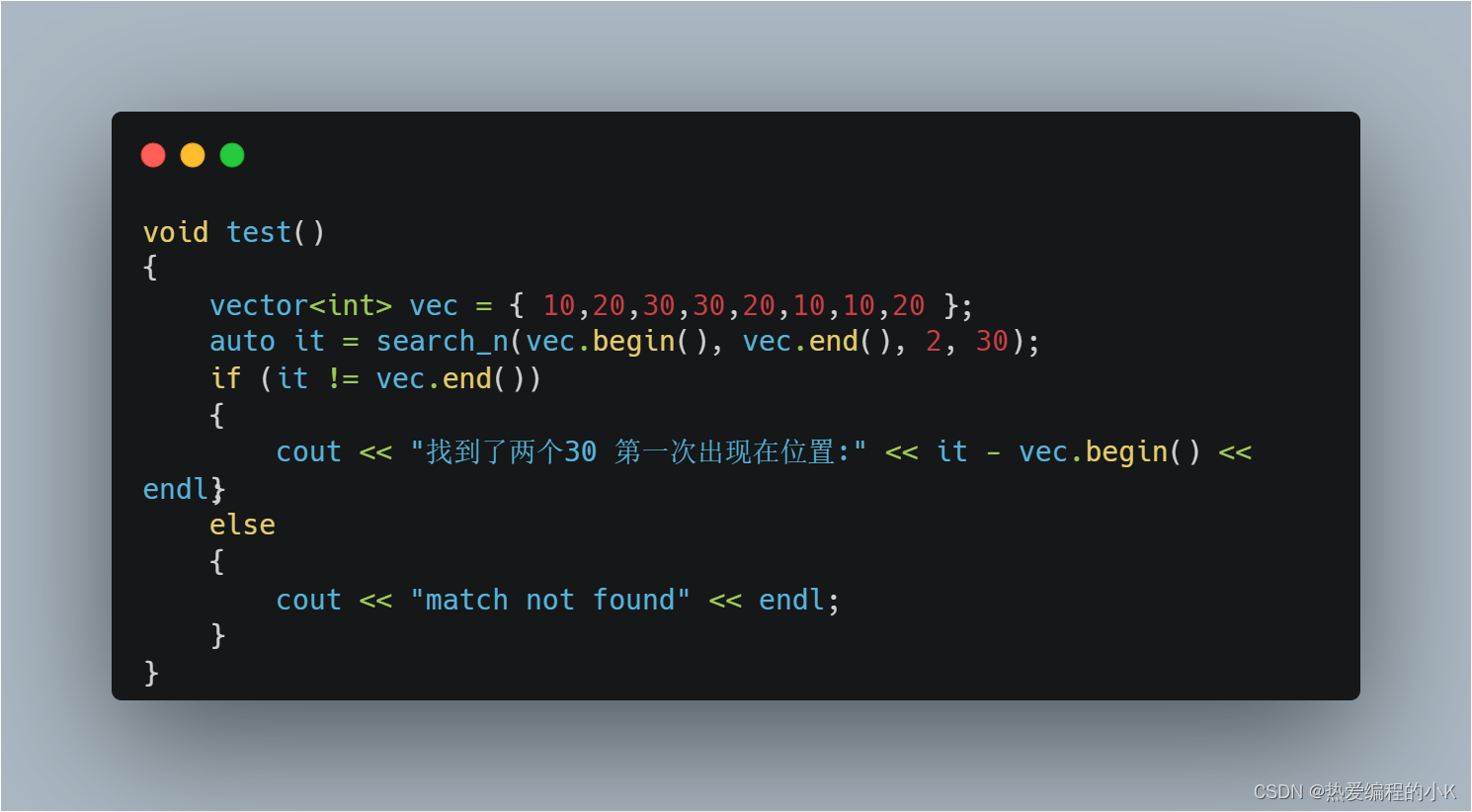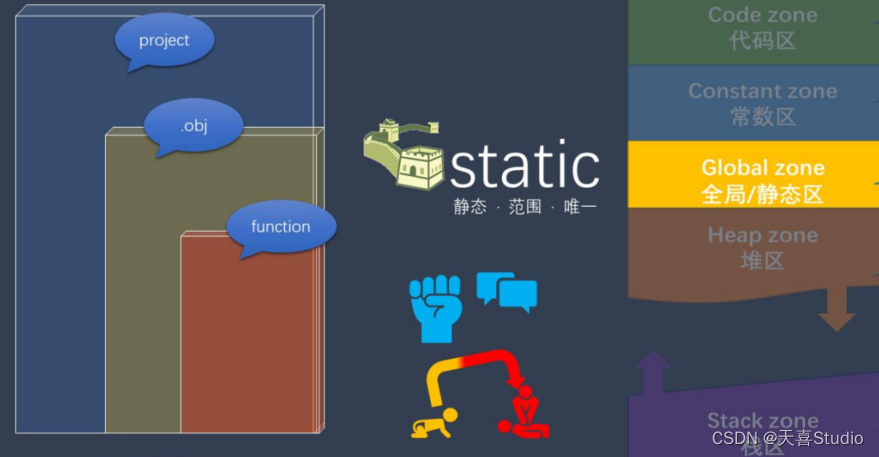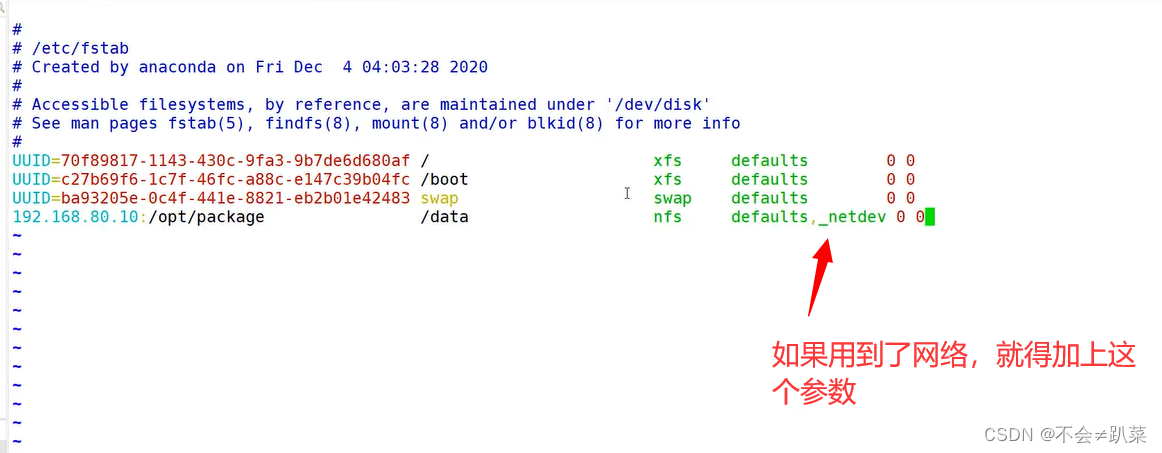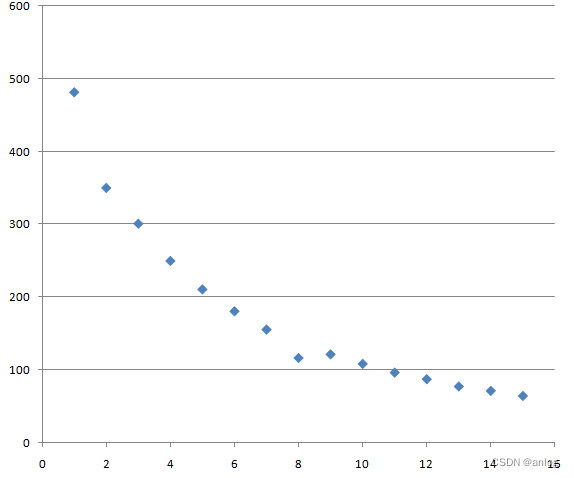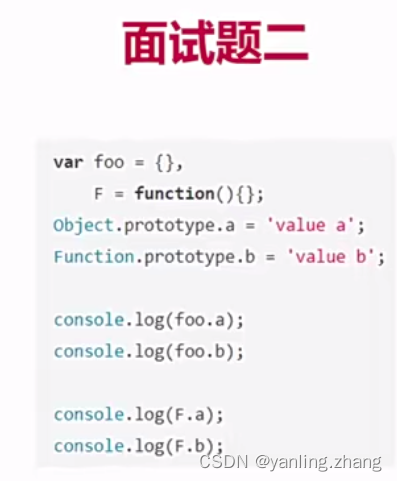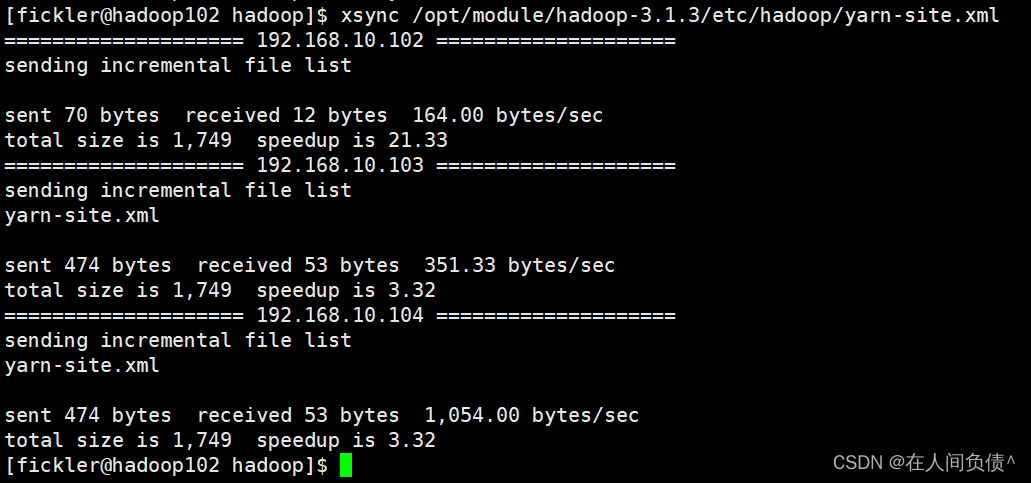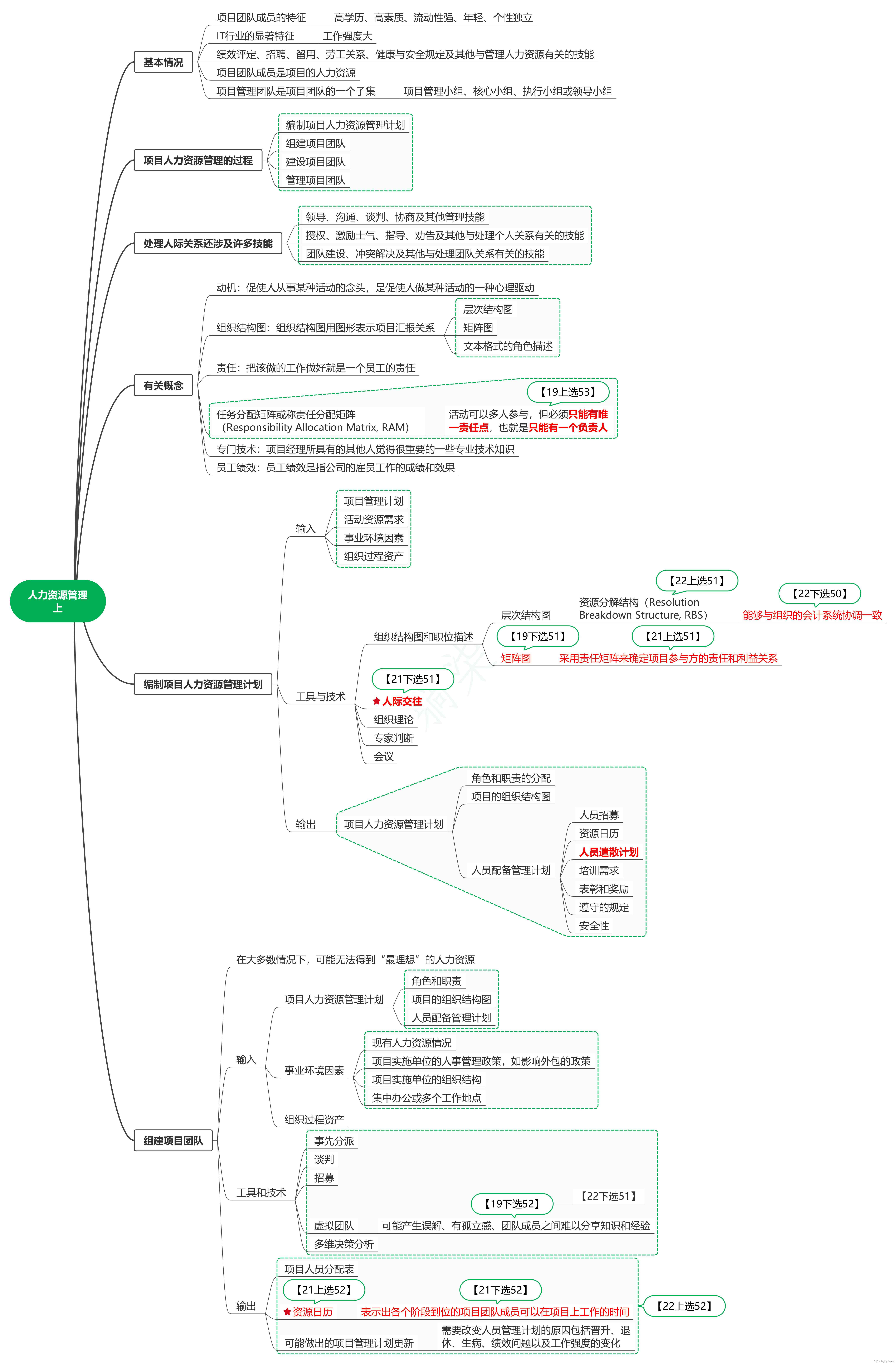
📖作者介绍:22级树莓人(计算机专业),热爱编程<目前在c++阶段>——目标Windows,MySQL,Qt,数据结构与算法,Linux,多线程,会持续分享学习成果和小项目的
📖作者主页:热爱编程的小K
📖专栏链接:c++🎉欢迎各位→点赞👏 + 收藏💞 + 留言🔔
💬总结:希望你看完之后,能对你有所帮助,不足请指正!共同学习交流 🐾

文章目录
- <algorithm>
- 非质变算法(18个)
- 1、all_of
- 2、any_of
- 3、none_of
- 4、for_each
- 5、find
- 6、find_if
- 7、find_if_not
- 8、find_end
- 9、find_first_of
- 10、adjacent_find
- 11、count
- 12、count_if
- 13、mismatch
- 14、equal
- 15、equal_range
- 16、is_permutation
- 17、search
- 18、search_n
头文件定义了一个专门设计用于元素范围的函数集合。
范围是可以通过迭代器或指针访问的任何对象序列,例如数组或某些STL容器的实例。但是请注意,算法通过迭代器直接对值进行操作,不会以任何方式影响任何可能的容器的结构(它永远不会影响容器的大小或存储分配)
非质变算法(18个)
非质变算法:算法不会改变容器的数据。
1、all_of
区间[开始, 结束)中是否所有的元素都满足判断式p,所有的元素都满足条件返回true,否则返回false。
void test1()
{
vector<int> vec = { 1,3,5,7,9,11};
if (all_of(vec.begin(), vec.end(), [](int n)->bool {return n % 2; }))
{
cout << "所有元素都是奇数" << endl;
}
}
2、any_of
区间[开始, 结束)中是否至少有一个元素都满足判断式p,只要有一个元素满足条件就返回true,否则返回true
void test2()
{
vector<int> vec = { 1,3,5,7,9,11,2 };
if (any_of(vec.begin(), vec.end(), [](int n)->bool {return n % 2==0; }))
{
cout << "存在偶数" << endl;
}
}
3、none_of
区间[开始, 结束)中是否所有的元素都不满足判断式p,所有的元素都不满足条件返回true,否则返回false,与all_of正好相反,所以只用换函数就可以了,不用换判断条件
void test3()
{
vector<int> vec = { 2,4,6,8,10 };
if (none_of(vec.begin(), vec.end(), [](int n)->bool {return n % 2; }))
{
cout << "所有元素都不是奇数" << endl;
}
}
4、for_each
将函数应用到范围,下面的例子是将Lambad表达式组成的打印函数应用到vec中,打印
void test()
{
vector<int> vec = { 1,3,5,7,9 };
for_each(vec.begin(), vec.end(), [](int n) {cout << n << " "; });
}
5、find
在范围内搜索等于value的值
void test4()
{
vector<int> vec = { 1,3,5,7,9 };
auto it = find(vec.begin(), vec.end(), 5);
if (it != vec.end())
{
cout << "found it:" << *it << endl;
}
else
{
cout << "not found" << endl;
}
}
6、find_if
根据指定的查找规则,在指定区域内查找第一个符合该函数要求(使函数返回 true)的元素.下面的例子返回3,因为第一个大于2的是3
void test()
{
vector<int> vec = { 1,3,5,7,9 };
//查找第一个大于2的元素
auto it = find_if(vec.begin(), vec.end(), [](int n) {return n > 2; });
if (it != vec.end())
{
cout << "found it:" << *it << endl;
}
else
{
cout << "not found" << endl;
}
}
7、find_if_not
查找范围内的元素,not表示否定,上面的例子,使用find_if_not就表示查找不大于2的元素(小于或等于2的元素)
void test6()
{
vector<int> vec = { 1,3,5,7,9 };
//查找第一个小于等于2的元素
auto it = find_if_not(vec.begin(), vec.end(), [](int n) {return n > 2; });
if (it != vec.end())
{
cout << "found it:" << *it << endl;
}
else
{
cout << "not found" << endl;
}
}
8、find_end
template <class _FwdIt1, class _FwdIt2
_FwdIt1 find_end(_FwdIt1 const _First1, const _FwdIt1 _Last1, const _FwdIt2 _First2, const _FwdIt2 _Last2)
在[first1,last1)范围内搜索由[first2,last2)定义的序列的最后一次出现,并返回指向其第一个元素的迭代器,如果没有出现,则返回指向last1的迭代器。
两个范围中的元素都使用操作符==(或在版本(2)中使用pred)进行顺序比较:只有当[first2,last2)的所有元素都为真时,才认为[first1,last1)的子序列是匹配的
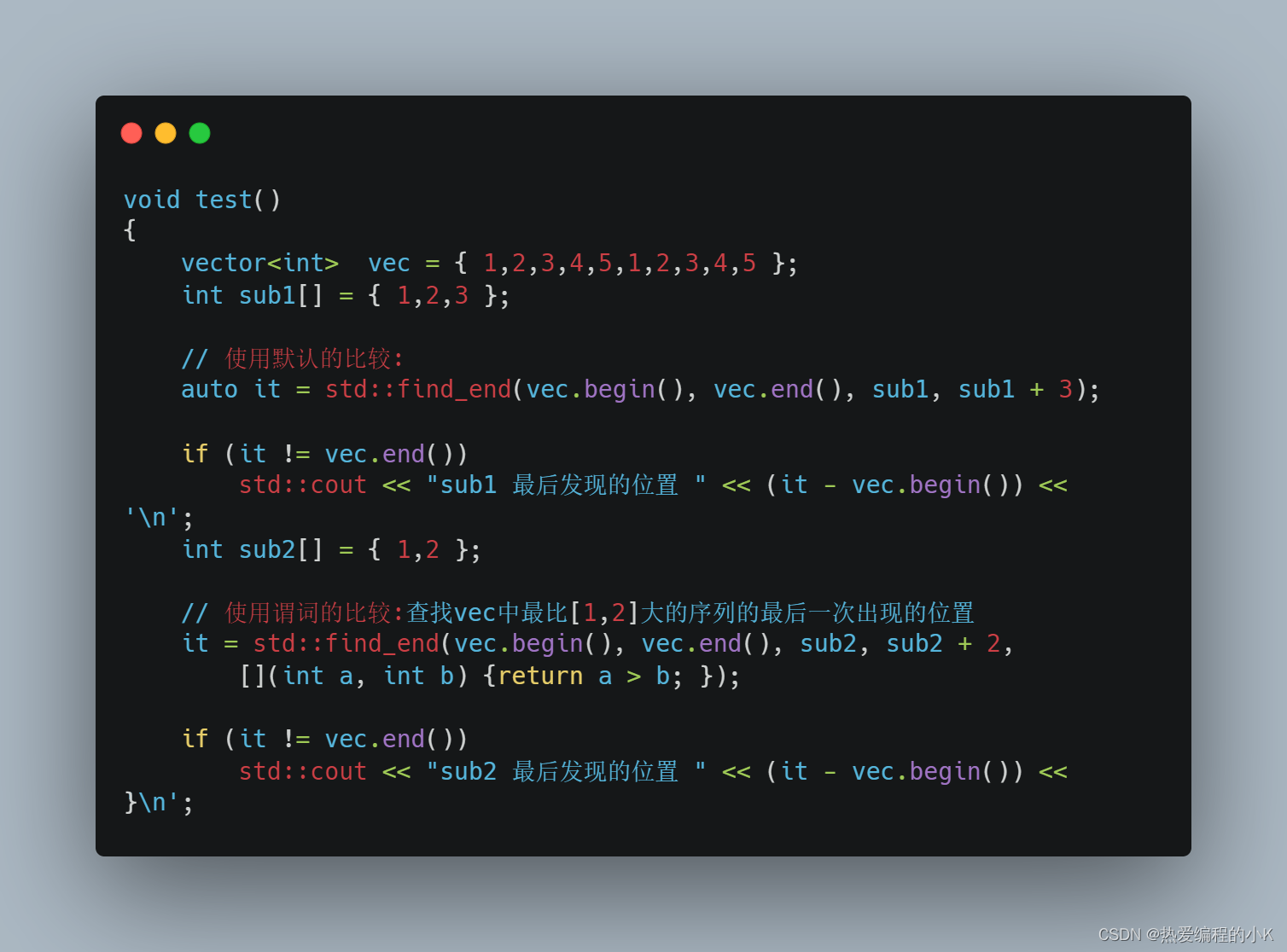
9、find_first_of
template <class _FwdIt1, class _FwdIt2>
_FwdIt1 find_first_of(const _FwdIt1 _First1, const _FwdIt1 _Last1, const _FwdIt2 _First2,
const _FwdIt2 _Last2)
返回一个迭代器,指向范围[first1,last1)中与[first2,last2)中的任何元素匹配的第一个元素。如果没有找到这样的元素,函数返回last1。
[first1,last1)中的元素使用操作符==(或在版本(2)中使用pred)与[first2,last2)中的每个值进行顺序比较,直到匹配为止。
void test()
{
int arr[] = { 1,3,1,4,5,2,0 };
int sub[] = { 5,3 };
auto it = find_first_of(arr, arr + 7,sub,sub+2);
if (it != arr + 7)
{
cout << "在arr中找到与sub中匹配的元素" <<*it<< endl;
}
else
{
cout << "not found" << endl;
}
}
10、adjacent_find
求范围内相等的相邻元素,在[first,last]范围内搜索匹配的两个连续元素的第一次出现,并返回指向这两个元素中的第一个的迭代器,如果没有找到这样的对,则返回指向最后一个的迭代器。
void test()
{
int arr[] = { 1,3,3,4,5,2,0,6,6 };
vector<int> vec(arr, arr + 9);
auto it = adjacent_find(vec.begin(), vec.end());
if (it != vec.end())
cout << "第一对重复的元素是:" << *it << endl;
it = adjacent_find(it + 1, vec.end(), [](int a, int b) {return a == b; });
if (it != vec.end())
cout << "第二对重复的元素是:" << *it << endl;
}
11、count
在范围内计算值的出现次数
void test()
{
int arr[] = { 1,3,3,4,5,2,0,6,6 };
vector<int> vec(arr, arr + 9);
long long cnt = count(vec.begin(), vec.end(), 3);
cout << "3出现次数:" << cnt << endl;
12、count_if
返回满足范围条件的元素个数
void test()
{
int arr[] = { 1,3,3,4,5,2,0,6,6 };
vector<int> vec(arr, arr + 9);
long long //统计大于4的元素个数
cnt = count_if(vec.begin(), vec.end(), [](int n) {return n > 4; });
cout << "大于4的元素个数:" << cnt << endl;
}
13、mismatch
返回满足范围条件的元素个数,比较范围[first1,last1]中的元素与从first2开始的范围中的元素,并返回两个序列中第一个不匹配的元素。
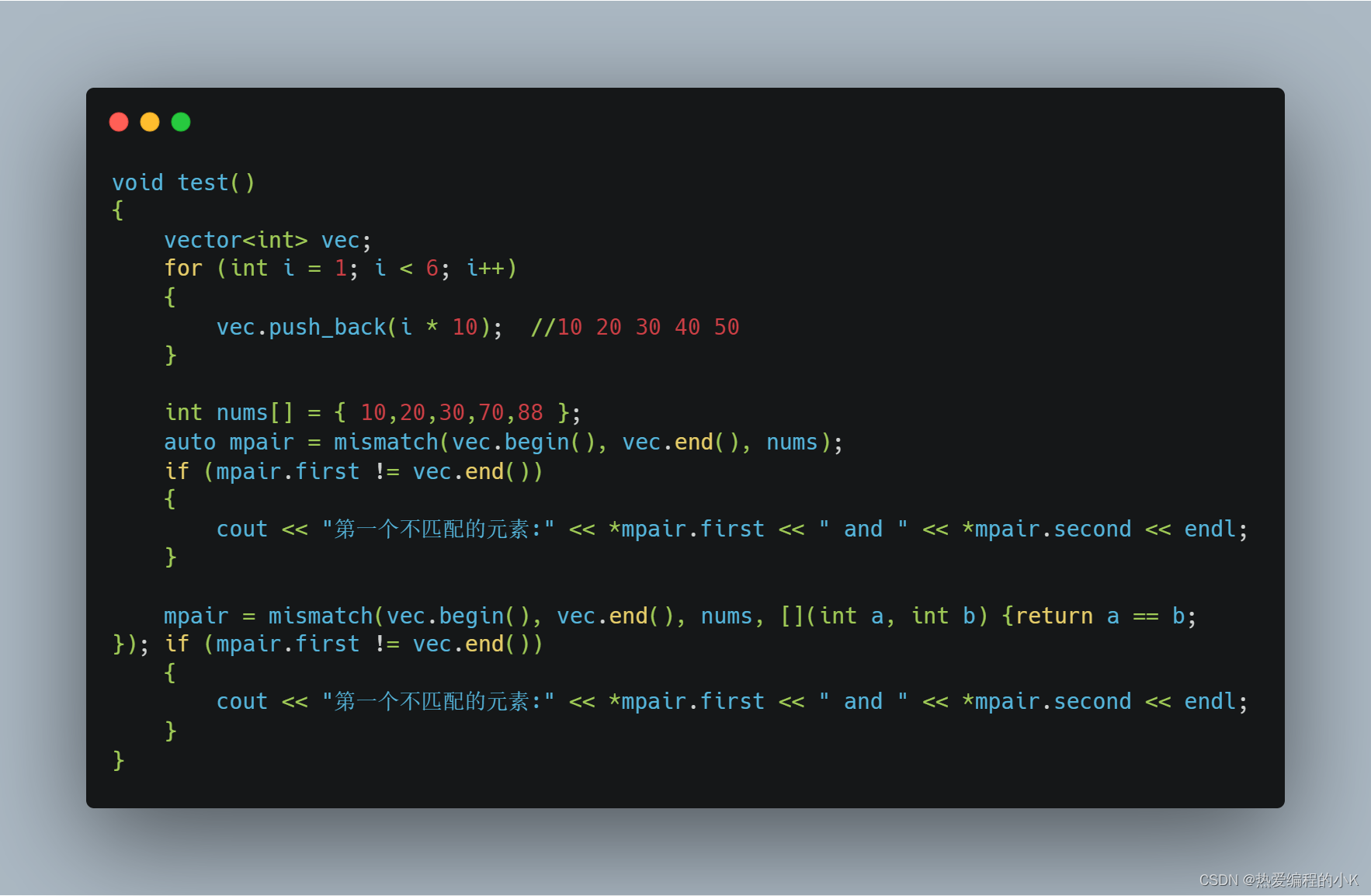
14、equal
测试两个范围内的元素是否相等,比较元素个数为两个序列中最短的那个序列的元素个数。
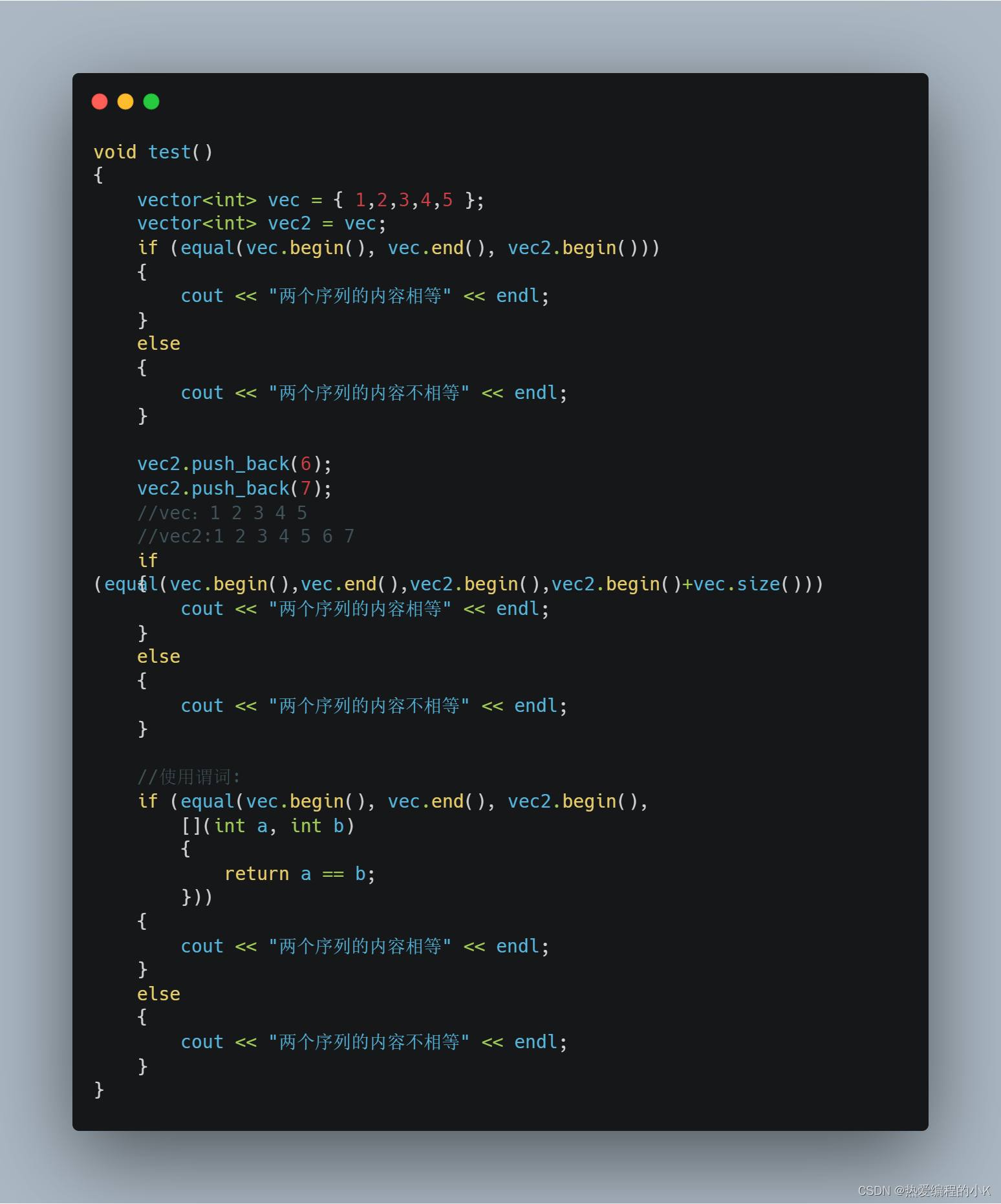
15、equal_range
功能类似equal,返回一对iterator,第一个表示lower_bound,第二个表示upper_bound。
void test()
{
vector<int> vec = { 10,20,30,30,20,10,10,20 };
//必须先排序:因为equal_range使用了二分查找
sort(vec.begin(), vec.end());
auto mpair = equal_range(vec.begin(), vec.end(), 20);
cout << *mpair.first << " " << *mpair.second << endl;
}
16、is_permutation
比较范围[first1,last1)中的元素与从first2开始的范围中的元素,如果两个范围中的所有元素都匹配,则返回true,即使顺序不同。
void test()
{
vector<int> vec = { 1,2,3,4,5 };
vector<int> vec1 = { 5,4,3,2,1 };
if (is_permutation(vec.begin(), vec.end(), vec1.begin()))
{
cout << "vec vec1两个是排列不同的相同序列" << endl;
}
}
17、search
在[first1,last1)范围内搜索由[first2,last2)定义的序列的第一次出现,并返回指向其第一个元素的迭代器,如果没有找到第一次出现的元素,则返回指向last1的迭代器。
void test()
{
vector<int> vec = { 1,2,88,3,4,5,9,7 };
int ints[] = {4,5};
auto it = search(vec.begin(), vec.end(), ints, ints + 2);
if (it != vec.end())
{
cout << "ints fount at pos:" << it - vec.begin() << endl;
}
}
18、search_n
搜索范围[first,last)中元素的值为val的数量是否为count,每个元素的比较值都等于val(或pred返回true)。
该函数返回指向第一个此类元素的迭代器,如果没有找到此类序列则返回指向最后一个元素的迭代器。
